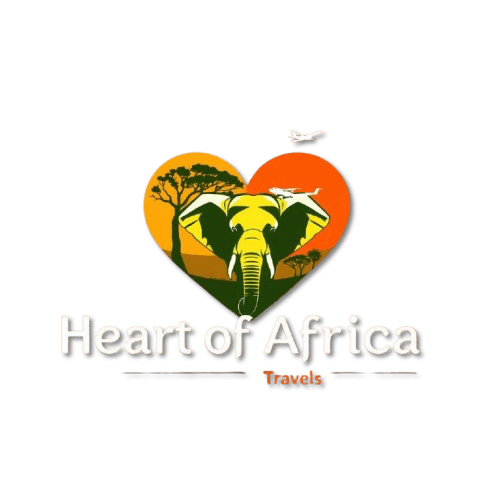
Namibia's Most Visited Places
Etosha National Park
Spanning over 22,000 square kilometers, Etosha National Park is a premier safari destination, with its name meaning "Great White Place" in reference to the vast salt pan that dominates its landscape. The park is home to an extensive range of wildlife, including the "Big Five" (although buffalo are absent here). Unique to Etosha are its easily accessible waterholes where wildlife congregates, allowing for unparalleled viewing opportunities. Key spots within the park include Okaukuejo, Halali, and Namutoni camps, each offering accommodations, campsites, and scenic viewpoints. Etosha’s diverse habitats, from mopane woodlands to open plains, support a range of animals, from the endangered black rhino to vibrant flamingo flocks that gather seasonally on the pan.


Fish River Canyon
Fish River Canyon is the largest canyon in Africa and the second-largest in the world, stretching for 160 kilometers, up to 27 kilometers wide, and reaching depths of 500 meters. Located in southern Namibia, the canyon was formed millions of years ago by tectonic shifts and the gradual erosion of the Fish River. It is especially popular among hiking enthusiasts who embark on the Fish River Canyon Trail, a five-day trek offering unparalleled views and the chance to witness unique flora and fauna adapted to this arid region. Visitors who aren’t hiking can still take in the breathtaking views from several lookout points along the canyon rim, where they can observe the winding river below and the layered rock formations that reveal the area’s geological history.
Swakopmund
Swakopmund, Namibia’s adventure capital, is a charming coastal town with German colonial architecture, situated between the Namib Desert and the Atlantic Ocean. Founded in 1892, the town retains a unique blend of German and African culture, evident in its architecture, bakeries, and festivals. Swakopmund offers an array of adventure sports such as sandboarding, quad biking, skydiving, and even dolphin tours along the coast. With a laid-back beach vibe, Swakopmund is also known for its cool ocean breezes, making it a perfect retreat from the inland heat. Nearby, the stunning sand dunes of the Namib Desert are ideal for desert excursions, adding to the town’s appeal as a destination that combines relaxation with adrenaline-fueled activities.


Skeleton Coast
Known for its treacherous fog and haunting atmosphere, the Skeleton Coast stretches along 500 kilometers of Namibia’s northwestern coast. The region gets its name from the numerous shipwrecks and skeletal remains that dot the coastline, remnants of vessels that met their fate on its shores. Due to dense coastal fog, strong currents, and fierce Atlantic winds, the Skeleton Coast is one of the most hostile places on Earth, yet it has a unique, rugged beauty. Visitors can explore shipwrecks, visit the Cape Cross Seal Reserve, and, with permits, venture into the Skeleton Coast National Park for a rare chance to see desert-adapted wildlife like elephants, lions, and hyenas that survive in this harsh environment. The stark contrast between the desert and ocean here is breathtaking.
Sossusvlei Excursion
Situated in the Namib-Naukluft National Park, Sossusvlei is a clay and salt pan surrounded by some of the tallest dunes in the world, reaching up to 300 meters. The dunes' striking red hues are due to iron oxide and are most spectacular at sunrise and sunset, when their colors intensify. Deadvlei, located nearby, is an ancient dried-up oasis featuring 900-year-old camelthorn trees preserved in the arid climate, creating an eerie yet beautiful contrast with the white clay floor and red dunes. The challenging hikes up Dune 45 and Big Daddy Dune reward visitors with panoramic views of the desert. Sossusvlei and Deadvlei are among the most photographed spots in Namibia, drawing photographers, adventurers, and nature enthusiasts alike


Damaraland
Damaraland, located in north-central Namibia, is a region of stunning landscapes featuring rocky outcrops, wide valleys, and ancient geological formations. It’s known for the Twyfelfontein rock engravings, a UNESCO World Heritage Site, where over 2,500 rock carvings depict wildlife and hunting scenes that date back thousands of years. Damaraland is also home to rare desert-adapted elephants, which have adapted to survive in arid conditions with limited water. The region offers visitors a chance to experience Namibia’s rural beauty, interact with local Damara communities, and explore natural landmarks like the Brandberg (Namibia’s highest mountain), the Petrified Forest, and the Organ Pipes rock formations.
Cultural Experiences
The Himba tribe is one of Namibia’s most iconic and traditional communities, renowned for their distinctive red ochre body paint, intricate hairstyles, and unique cultural practices. Living primarily in the remote Kunene region, the Himba are semi-nomadic pastoralists who depend on cattle and goats for livelihood. Their unique red ochre, a paste made from butterfat and ochre pigment, is applied to their skin and hair, symbolizing beauty and protection from the harsh desert climate.The Himba have preserved their ancient traditions despite modern influences, adhering to ancestral customs, a strong kinship system, and a deep connection to their land. Known for their warm hospitality, they often welcome visitors to learn about their culture, including their traditional huts, jewelry, and rituals.


Sandwich Harbor
Discover the raw beauty of Sandwich Harbor, where the towering golden sand dunes of the Namib Desert meet the blue waves of the Atlantic Ocean. Known as one of Namibia's most dramatic landscapes, Sandwich Harbor offers rare views of lush wetlands juxtaposed against vast dunes. Here, adventurous travelers can experience thrilling 4x4 drives, scenic views, and opportunities to spot a variety of bird species and wildlife that thrive in this unique ecosystem.
Cape Cross Seal Colony
Cape Cross Seal Colony is home to one of the largest colonies of Cape fur seals in the world. Thousands of seals gather along the rocky shores of the Atlantic coast, offering visitors an unforgettable experience to witness these animals in their natural habitat. This site, steeped in history, also commemorates the landing of Portuguese explorer Diego Cão in the 15th century.

"Your Journey Starts Here"
Heart Of Africa Travels
"Experience Namibia Through Our Eyes"
Copyright © 2025